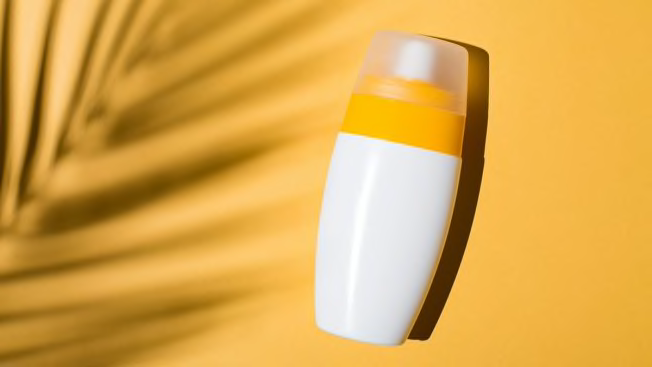What Even Is Skin Glazing and Should You Do It?
Plus, experts share tips on achieving that glow and how to make sure your skin doesn't freak out

Looking like a glazed donut is becoming popular. The look is called “skin glazing,” a K-Beauty (short for Korean Beauty) skin care trend that is supposed to leave you looking glowy and dewy without using any makeup products. On TikTok, #skinglazing has around 140K views and features many variations of the routine.
If you have sensitive skin, skin concerns, or are just unsure about what this skin care routine entails, keep reading. We spoke to experts about tips and what to look for in products for each skin type, as well as the possible side effects of skin glazing and alternative routines.
What Is Skin Glazing?
Simply put, skin glazing involves layering skin care products in a variety of ways. Some routines can be as few as five steps, while others can be as many as 12 or more. There isn’t a set list of products to use, but the goal is to “improve the quality of your skin and achieve a dewy, or glazed, finish with the long-term goal of no longer requiring makeup,” says Sonya Kenkare, MD, FAAD.
How Do You Get Glazed Skin?
There aren’t specific products tailored to skin glazing, either. A basic routine, according to Alison Ehrlich, MD, MHS, and Robin Ashinoff, MD, is the following:
- Start with double cleansing. Use a pre-cleansing balm to dissolve any oil-based makeup and sunscreens. Do a second cleanse to wash away any remaining impurities (makeup, dirt, excess oil, etc.) without stripping or drying the skin.
- Spray a hydrating facial mist on the face.
- Apply a face oil. This step is to give the skin a more dewy and glowy look.
- Apply a moisturizing balm or moisturizer.
- Finally, end with another spritz of facial mist.
Additional steps can include toner, serums, retinoids, exfoliators, etc.
Who Should Try Skin Glazing?
This routine is particularly beneficial for people with dry skin and for those whose skin dries out overnight, says Kenkare, though other skin types can try it, too. Go to your trusted dermatologist to review the products you plan to use, experts say. Here are some recommendations about what to look for:
Acne-prone skin. Look for a moisturizer that is “noncomedogenic,” which means “not acne-causing,” says Enrlich. Avoid oil-containing products, Kenkare says. “Products that contain oil can clog the pores,” she says, which can cause more breakouts.
Expert Tips to Achieve the Skin-Glazed Look
With multiple products being layered, things can go awry quickly, regardless of skin type, dermatologists say. Our experts shared some tips to help guard against potential adverse reactions and set expectations about the routine.
The Process Can Take a Lot ofTime
Because there’s no set process, the layering routine for some can be time-consuming. For example, Kenkare tried it herself and slowly applied the products. It took her 10 to 15 minutes on a five-step routine. “I have dry skin, so I thought that the skin glazing was really nice for waking up with a moisturized and glowy finish,” she says. “But I don’t feel like I need that many products to consistently achieve that look.”
If spending 15 or more minutes on skin care seems daunting, you’re not alone. According to a recent Mintel survey of 1,612 people, 22 percent of respondents ages 18 to 44 say they have reduced the number of personal care products they use “to reduce their environmental footprint or streamline their routines.” Consider ways to streamline the process, such as using products that work double-duty.
Avoid Skin Glazing Daily
You don’t want to use these multistep regimens every day, because your skin will get irritated, says Ashinoff. “You will strip the skin of its natural barrier.”
The key to K-Beauty, she says, is that it’s supposed to be very gentle. It’s good to cleanse the skin but not upset its pH.
Don’t Go Overboard on Any Steps
Ashinoff advises her patients not to over-exfoliate, over-wash, and over-occlude because they can lead to milia (the tiny whiteheads or cysts that appear on the skin), clogged pores, or irritation. Kenkare urges people to try products in small areas first to see how their skin reacts.
Be Aware of Multiple Active Ingredients in Your Products
They can actually do more harm than good. When it comes to layering the products, Ashinoff has concerns with the active ingredients that might be in some of the products. For example, vitamin C, which can be found in serums, moisturizers, and other oil-based products, is a potent antioxidant that protects skin from wrinkles and environmental damage, says Ashinoff. It is also an acid and will lower the pH of the skin. Applying too many acidic products can lead to irritated skin, she says.
Retinols, derived from vitamin A, can also be found in some moisturizers. Retinols exfoliate the skin, increase collagen, and have anti-skin cancer properties, but “the key is to find a form of vitamin A that doesn’t cause irritation,” says Ashinoff. “It can also make you more sensitive to the sun, so you have to make sure you are wearing an adequate amount of sunscreen,” she says.

Photo: Tanja Ivanova/Getty Images Photo: Tanja Ivanova/Getty Images
Don’t Skip Sunscreen
One of Ehrlich’s main concerns is when skin glazing routines don’t mention the use of sunscreen. Skipping this key step can increase the risk of long-term pigmentation changes, developing wrinkles, and developing skin cancers, she says. Choose one that works with your skin care products.
Check out the best sunscreens of the year.
Warning: Your Skin Might Freak Out
There’s a potential risk of developing skin allergies when using multiple products, says Ehrlich, which can cause your skin to have reactions. According to Ashinoff and Ehrlich, some skin reactions and skin allergies include redness, itchiness, flaking, post-inflammatory hyperpigmentation (darker spots) or hypopigmentation (lighter spots), and swelling (for allergic reactions).
Some of these skin allergies and reactions can be caused by over-exfoliating or fragrances in the products. “Fragrances are one of the most frequently encountered causes of allergic contact dermatitis on the face,” Ehrlich says.
Alternative Routines
You can still get that dewy and glowy look without layering all those products, and it won’t be as time-consuming. Ehrlich finds that less is more. The most important concepts, she says, are cleaning and hydrating your face and applying sunscreen on a daily basis. Ashinoff suggests picking two or three products: cleanser, a moisturizer with sunscreen, and toner, which isn’t a part of the skin glazing routine she discussed.
Double cleansing may not be necessary. “The cleanser should be based on whether or not you’re also removing makeup,” says Ehrlich, “whether your skin is dry, whether your skin is oily, whether your skin is sensitive.” When it comes to cleansers, use one that you’re used to and doesn’t irritate your skin. Cleansers with salicylic acid, which Ashinoff says is an exfoliant that lightens the skin and unclogs pores, are good for acne-prone and aging skin.
For toners, Ashinoff finds that they “clean off the rest of the makeup, give you a clean palette.” Many toners have an active ingredient like glycolic acid, low doses of salicylic acid, green tea, or vitamin C.
Skin glazing has become popular with the help of social media and new skin care lines promoting that dewy and glowy look. However, according to our experts, layering multiple products might not be the best option. It’s important to first check the ingredients in the products to make sure they react well with your skin and run any questions by your dermatologist.
















